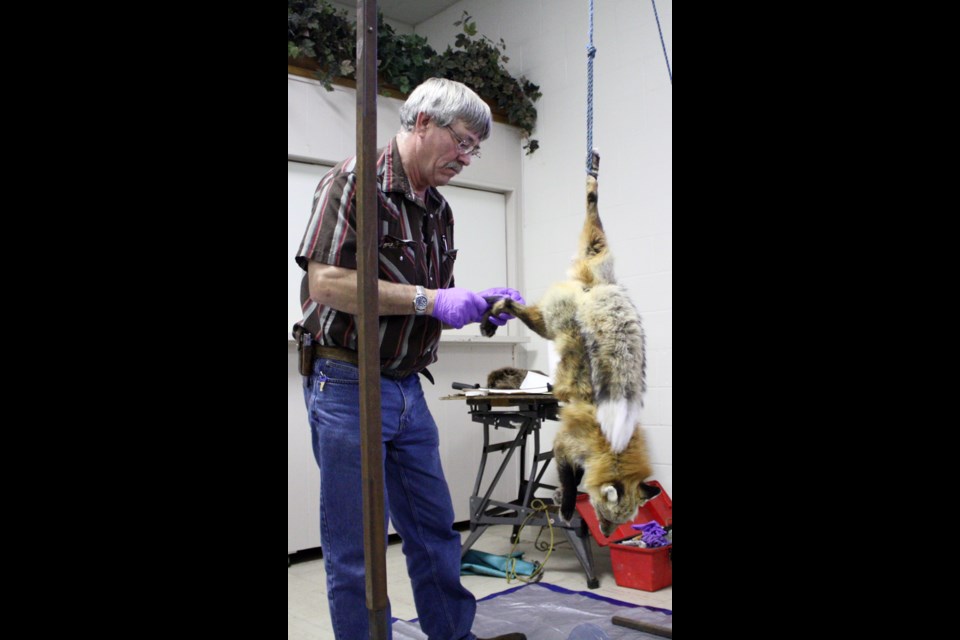It is fair to say the early history of Saskatcewan, then part of the North West Territories, was all about the fur trade.
Today, the trade is a mere vestige of its former glory. Still, a couple of hundred people sign up every year to learn trapping and skinning.
Floyd Hendrickson, humane education coordinator for the Saskatchewan
Trappers Association, teaches most of them including a group of approximately 20 at Springside October 31.
Hendrickson explained that any Saskatchewan resident can become a trapper with just a little bit of effort.
“They have to have the course,” he said. “They can challenge it at a DNR office, but it’s more hands-on and better experience. Before you purchase your licence, though, you have to also have your hunter safety and be of the age of 12 years old.”
Hendrickson himself learned about trapping when he was a kid on the farm. After high school, he went off to work for a while, but returned to the farm in 1975. At that time working at it full time in the winter was a legitimate job.
“I did actually make money at it,” he said.
Over the past few decades, however, prices have declined.
“The example is, on the coyote side of it, 10 years ago, there were a lot of five or 10 dollar coyotes and the top ones were 30, 40 dollars,” Hendrickson explained. “It wasn’t worth it, but, you know, the way I look at it, if you’re sitting at home and doing nothing, sitting watching TV, you can go out and enjoy yourself.”
He does know of at least one trapper who makes a living out of Black Lake way up north, but he said trapping in the south is a bit limiting.
Prices have improved, though, he said, with coyote bringing an average of approximately $100.
There may be numerous causes for the soft market, but Hendrickson counts modern attitudes among them.
“It’s to do with the fur trade, I guess,” he said. “People are against fur, like they’re against livestock, eating vegetables and stuff like that, that’s what I’m thinking part of it is.”
Hendrickson, who spends most of his time in rural Saskatchewan does not see a lot of the anti-fur sentiment first hand, although he has encountered it at trade shows in larger cities such as Saskatoon.
One of the arguments against trapping is cruelty, but Hendrickson said traps have changed.
“They’re very humane now, 50, 60 years ago they weren’t,” he said.
Leg-hold traps are now cushioned or feature gaps to prevent cutting the animal’s skin or breaking its bones. Modern snares are very efficient at killing animals quickly.
Nevertheless, Hendrickson sells most of his furs at auction, the real market being in China. He also finds ways of value-adding to the furs he traps.
“Down here in southern Saskatchewan I can run, say, 100 miles and trap coyote, fox, beaver whatever’s around,” he said. “Myself, I like to do skunk because nobody else really likes them. You can make products out of your stuff, a skunk alone is only worth about six bucks, but the hat we sell for about $200. It takes two skunks for a hat.”



